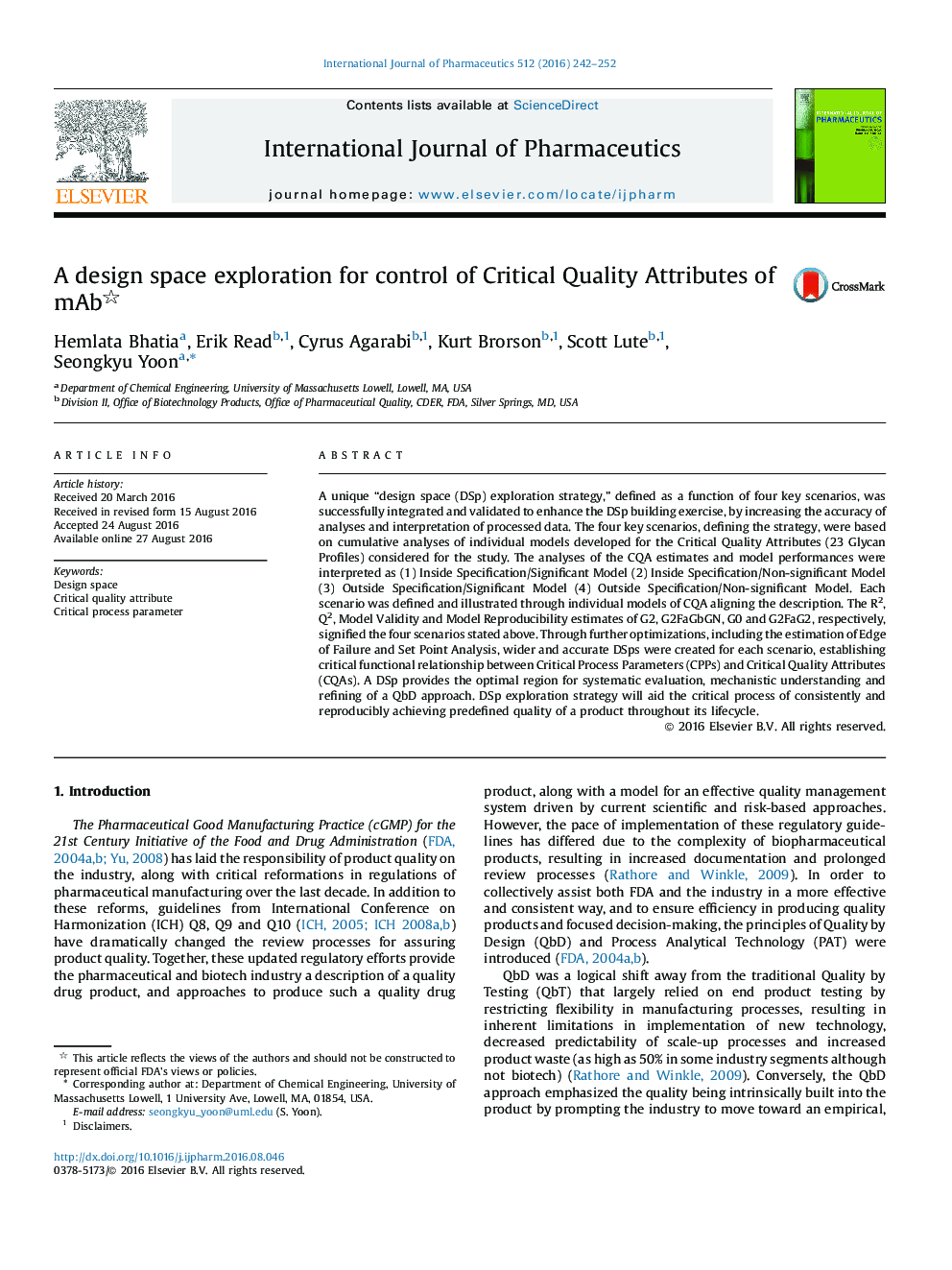| Article ID | Journal | Published Year | Pages | File Type |
|---|---|---|---|---|
| 2500801 | International Journal of Pharmaceutics | 2016 | 11 Pages |
A unique “design space (DSp) exploration strategy,” defined as a function of four key scenarios, was successfully integrated and validated to enhance the DSp building exercise, by increasing the accuracy of analyses and interpretation of processed data. The four key scenarios, defining the strategy, were based on cumulative analyses of individual models developed for the Critical Quality Attributes (23 Glycan Profiles) considered for the study. The analyses of the CQA estimates and model performances were interpreted as (1) Inside Specification/Significant Model (2) Inside Specification/Non-significant Model (3) Outside Specification/Significant Model (4) Outside Specification/Non-significant Model. Each scenario was defined and illustrated through individual models of CQA aligning the description. The R2, Q2, Model Validity and Model Reproducibility estimates of G2, G2FaGbGN, G0 and G2FaG2, respectively, signified the four scenarios stated above. Through further optimizations, including the estimation of Edge of Failure and Set Point Analysis, wider and accurate DSps were created for each scenario, establishing critical functional relationship between Critical Process Parameters (CPPs) and Critical Quality Attributes (CQAs). A DSp provides the optimal region for systematic evaluation, mechanistic understanding and refining of a QbD approach. DSp exploration strategy will aid the critical process of consistently and reproducibly achieving predefined quality of a product throughout its lifecycle.
Graphical abstractFigure optionsDownload full-size imageDownload high-quality image (145 K)Download as PowerPoint slide
